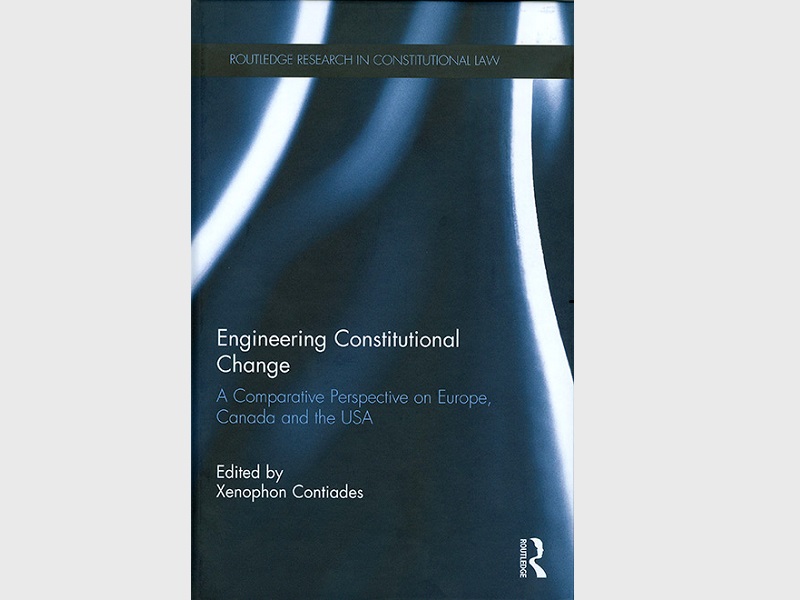“Engineering Constitutional Change. A Comparative Perspective on Europe, Canada and the USA”
Editor: Xenophon Contiades
Routledge
478 p.
This volume provides a holistic presentation of the reality of constitutional change in 18 countries (the 15 old EU member states, Canada, Switzerland and the USA). The essays offer analysis on formal and informal constitutional amendment bringing forth the overall picture of the parallel paths constitutional change follows, in correlation to what the constitution means and how constitutional law works. To capture the patterns of constitutional change, multi-faceted parameters are explored such as the interrelations between form of government, party system, and constitutional amendment; the interplay between constitutional change and the system of constitutionality review; the role of the people, civil society, and experts in constitutional change; and the influence of international and European law and jurisprudence on constitutional reform and evolution.
In the extensive final, comparative chapter, key features of each country’s amendment procedures are epitomized and the mechanisms of constitutional change are explained on the basis of introducing five distinct models of constitutional change. The concept of constitutional rigidity is re-approached and broken down to a set of factual and institutional rigidities. The classification of countries within models, in accordance with the way in which operative amending mechanisms connect, leads to a succinct portrayal of different modes of constitutional change engineering.
Contributors:
Abraham Barrero Ortega, Christian Behrendt, Robert Blackburn, Xenophon I. Contiades, Thomas Fleiner, Alkmene Fotiadou, Jörg Gerkrath, Tania Groppi, Allan C. Hutchinson, Liliane Icher, Markus Kotzur, Helle Krunke, Fiona de Londras, Jonatas E. M. Machado, Lars-Göran Malmberg, Wanda Mastor, David Gwynn Morgan, Tuomas Ojanen, Irene Sobrino Guijarro, Manfred Stelzer, Ioannis A. Tassopoulos, John R. Vile, Wim J.M. Voermans


